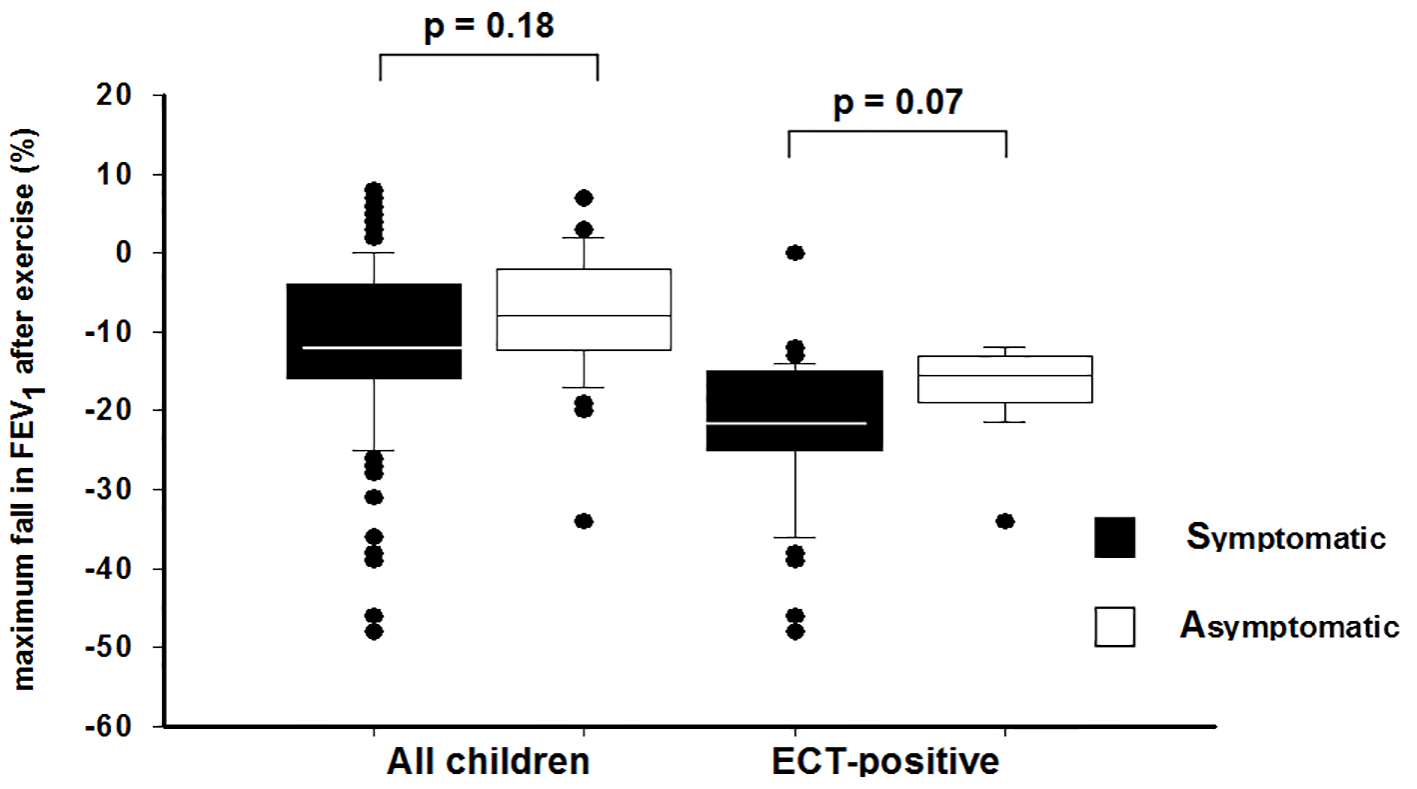
Figure 1. Box plots show the maximum fall in FEV1 after exercise challenge test between symptomatic and asymptomatic children. The median is the line bisecting the box, the box limits represent 25th and 75th percentiles, and whiskers extend to the 10th and 90th percentile. The black dots represent outliers. FEV1: forced expiratory volume in 1 s.